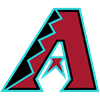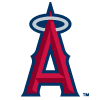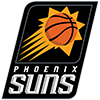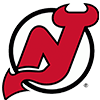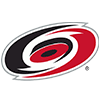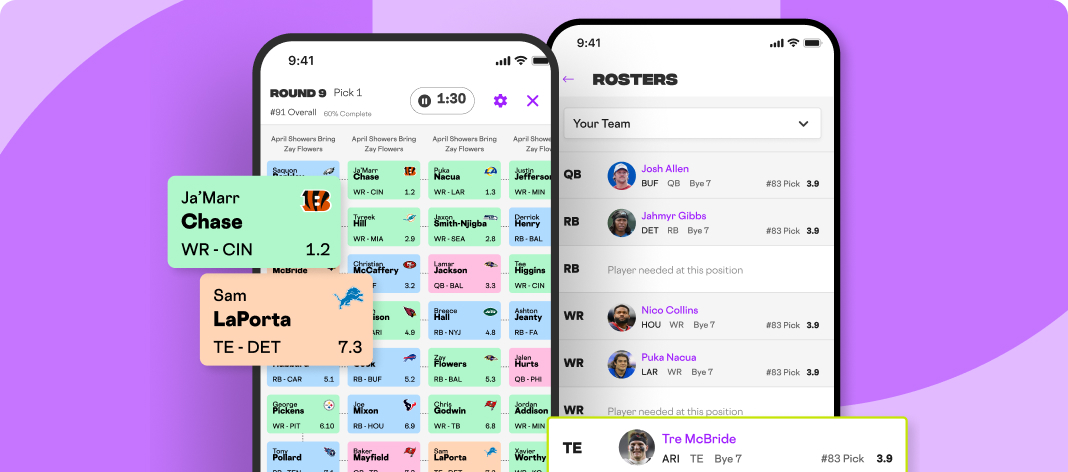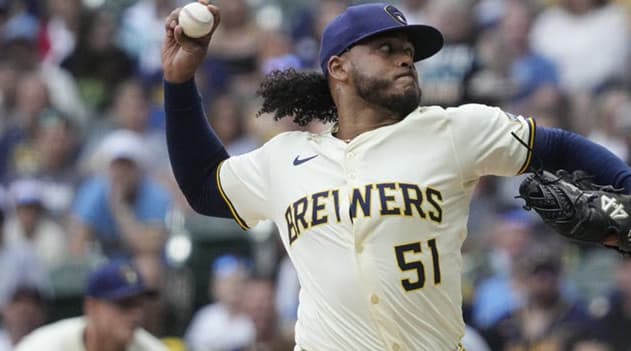Last week, the first half All-Star teams were presented, both in terms of total earnings and profit. Admittedly, the exercise is as much for entertainment as a lesson, but the names are fun to look at, especially in context with our rosters. That said, a couple of things stood out as the lists were put together, serving as a launching pad into the second half and efficient managing of our fantasy clubs.
Initially, I didn't think much of the fact the first 12 and second 12 batters neatly fit into a standard legal lineup. Usually, there's at least one hitter in the top 12, often an outfielder, squeezed out of first-team honors due to a position crunch, then another in the next dozen etc.
Upon closer inspection, not only weren't there any leftover outfielders, in order to render a First Team Overall legal lineup, Cody Bellinger (1B/OF) and Ketel Marte (2B/OF) landed in the outfield with Nolan Arenado (3B) occupying Utility. In the Second Team Overall outfield was Whit Merrifield (2B/OF) with Xander Bogaerts (SS) at Utility. In order to fill the Third Team Overall outfield, it was necessary to snub a half-dozen more productive infielders and elevate Kris Bryant (3B/OF) into the fifth OF spot.
Here's the position breakdown for the three First Half Overall teams:
| OF | 11 |
| SS | 7 |
| C | 5 |
| 1B | 5 |
| 3B | 4 |
| 2BSS | 2 |
| C1B | 1 |
| 1B2B3B | 1 |
| 1BOF | 1 |
| 2B3B | 1 |
| 2BOF | 1 |
| 2BSSOF | 1 |
| 3BSS | 1 |
| 3BOF | 1 |
Other than the already
Last week, the first half All-Star teams were presented, both in terms of total earnings and profit. Admittedly, the exercise is as much for entertainment as a lesson, but the names are fun to look at, especially in context with our rosters. That said, a couple of things stood out as the lists were put together, serving as a launching pad into the second half and efficient managing of our fantasy clubs.
Initially, I didn't think much of the fact the first 12 and second 12 batters neatly fit into a standard legal lineup. Usually, there's at least one hitter in the top 12, often an outfielder, squeezed out of first-team honors due to a position crunch, then another in the next dozen etc.
Upon closer inspection, not only weren't there any leftover outfielders, in order to render a First Team Overall legal lineup, Cody Bellinger (1B/OF) and Ketel Marte (2B/OF) landed in the outfield with Nolan Arenado (3B) occupying Utility. In the Second Team Overall outfield was Whit Merrifield (2B/OF) with Xander Bogaerts (SS) at Utility. In order to fill the Third Team Overall outfield, it was necessary to snub a half-dozen more productive infielders and elevate Kris Bryant (3B/OF) into the fifth OF spot.
Here's the position breakdown for the three First Half Overall teams:
| OF | 11 |
| SS | 7 |
| C | 5 |
| 1B | 5 |
| 3B | 4 |
| 2BSS | 2 |
| C1B | 1 |
| 1B2B3B | 1 |
| 1BOF | 1 |
| 2B3B | 1 |
| 2BOF | 1 |
| 2BSSOF | 1 |
| 3BSS | 1 |
| 3BOF | 1 |
Other than the already discussed paucity of outfielders, the number of shortstop-eligible players stands out. Not only are there seven pure shortstops, four more players also qualify at the position.
Here's the eligibility breakdown for 15-team mixed leagues, encompassing 210 hitters:
| OF | 70 |
| C | 27 |
| SS | 22 |
| 1B | 21 |
| 3B | 14 |
| 2B | 7 |
| 1BOF | 6 |
| 2B3B | 6 |
| 1B2B3B | 4 |
| 1B3B | 4 |
| 2BSSOF | 3 |
| DH | 3 |
| C1B | 2 |
| 1B2BOF | 2 |
| 1B2BSSOF | 2 |
| 2B3BSS | 2 |
| 2BOF | 2 |
| 2BSS | 2 |
| 3BOF | 2 |
| 3BSS | 2 |
| C1B3BOF | 1 |
| 1B2B | 1 |
| 1BSS | 1 |
| 2B3BOF | 1 |
| 2B3BSSOF | 1 |
| 3BSSOF | 1 |
| SSOF | 1 |
There are only 70 OF-only players, though there are 22 others who qualify at the position. Still, there are usually more OF-only players in the positive-value draft pool.
The takeaway isn't just that outfield isn't as productive as usual, but in order to maximize lineup efficiency, it's incumbent to have several multi-position players at the ready. Excluding those eligible at catcher, there are 44 multiple-eligibility batters in the top 210 over the first half. Those in 15-team leagues best have three of them just to be on par with the other 14 competitors. Having one or two more puts someone else at a deficit.
The bottom line is, irrespective of the format, in order to compete at the optimal level a fantasy roster needs a means of getting anyone on the reserve list into an active spot. You can't afford to lose a productive reserve due to a locked position. This has always been true, but it's even more obligatory this season with a weaker than usual outfield pool.
Turning to pitching, some may point to only nine of the top 21 projected pitchers making the First Team Overall roster as an argument not to draft aces in the future. My stance on this has been well-documented; I won't force pitching just to get someone in the first few rounds. I don't purposely avoid taking an arm early, I just won't be a lemming and draft pitching because everyone else is doing it. That said, I don't consider three months worth of data ample enough to take a victory lap, not even close. This is a bizarre season for pitching, both in terms of health and adjustment to the juiced ball. Let's see what happens the next three months, not to mention whether MLB gives any indication the ball will be different.
The biggest takeaway with pitching isn't germane to starters, but non-closing relievers. For the first time in many years, reliever ERA is higher than starters. Here's the comparison to last year:
2019 | 2018 | |
| Starter | 4.47 | 4.19 |
| Reliever | 4.49 | 4.07 |
Now here's a look at the ERA of closers with at least 10 saves this season and a minimum of 20 last year:
2019 | 2018 | |
| ERA | 2.87 | 3.09 |
| WHIP | 1.10 | 1.11 |
Even with the increased run-scoring landscape, the most useful closers have better ratios than last season.
How about looking at similar data for relievers with at least 10 holds in 2019 and 20 in 2018. This represents the most likely subset of relievers used on an active fantasy roster.
2019 | 2018 | |
| ERA | 3.27 | 3.21 |
| WHIP | 1.18 | 1.15 |
Granted, it's not by much, but the non-closing relievers with the best chance of being on a fantasy roster in the aggregate are pitching worse than last season, though relative to league ERA, they're a bit better.
The takeaway here is that the lower-leverage portion of bullpens (those not getting saves or holds) has been just terrible this season. Admittedly, these pitchers aren't usually relevant in fantasy except in single-league formats, but it narrows the inventory when it comes to managing a mixed-league staff. If your second half plan is to play it safe with pitching and protect ratios, there's more volatility than usual with the pitchers available to do the job.
The final takeaway is independent of last week's Fantasy All-Star teams. All the talk is about power, but steals are trending towards their lowest per-game rate since 1972.
While none of the standard roto categories are linear in terms of gaps between adjacent teams, steals usually takes on a unique shape. The distance between the bottom few teams and top few is larger than the other categories, meaning the middle is more bunched.
With the lower league total, not only is the middle even more tightly distributed, the number necessary to propel you to or near the top is lower than previous campaigns. It still comes down to category placement in each league, but on paper there's more points to be had by acquiring a stolen base specialist this year. Of course, the possible lack of power from that roster spot could cost you more in other categories, but the point is in some instances, embellishing the steals category could pay big dividends. At minimum, those in daily leagues should float in a steals guy on Mondays and Thursdays to fill an open roster spot while NFBC participants should pay close attention to the split week matchups for their stolen-base contributors, taking advantage of speedsters facing lesser batteries. Adding to steals in this manner could help soften the hit to the other stats.
Enjoy the break everyone!













